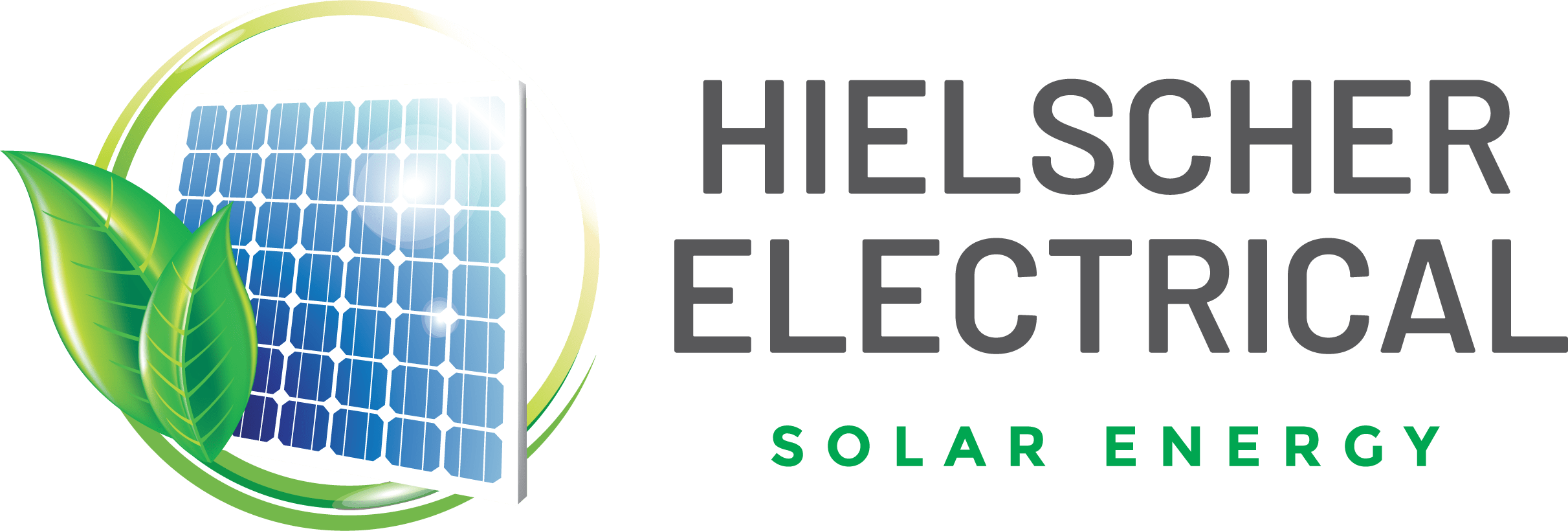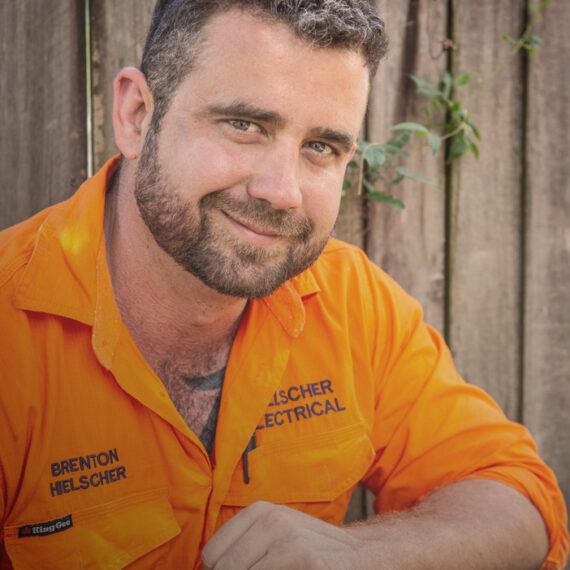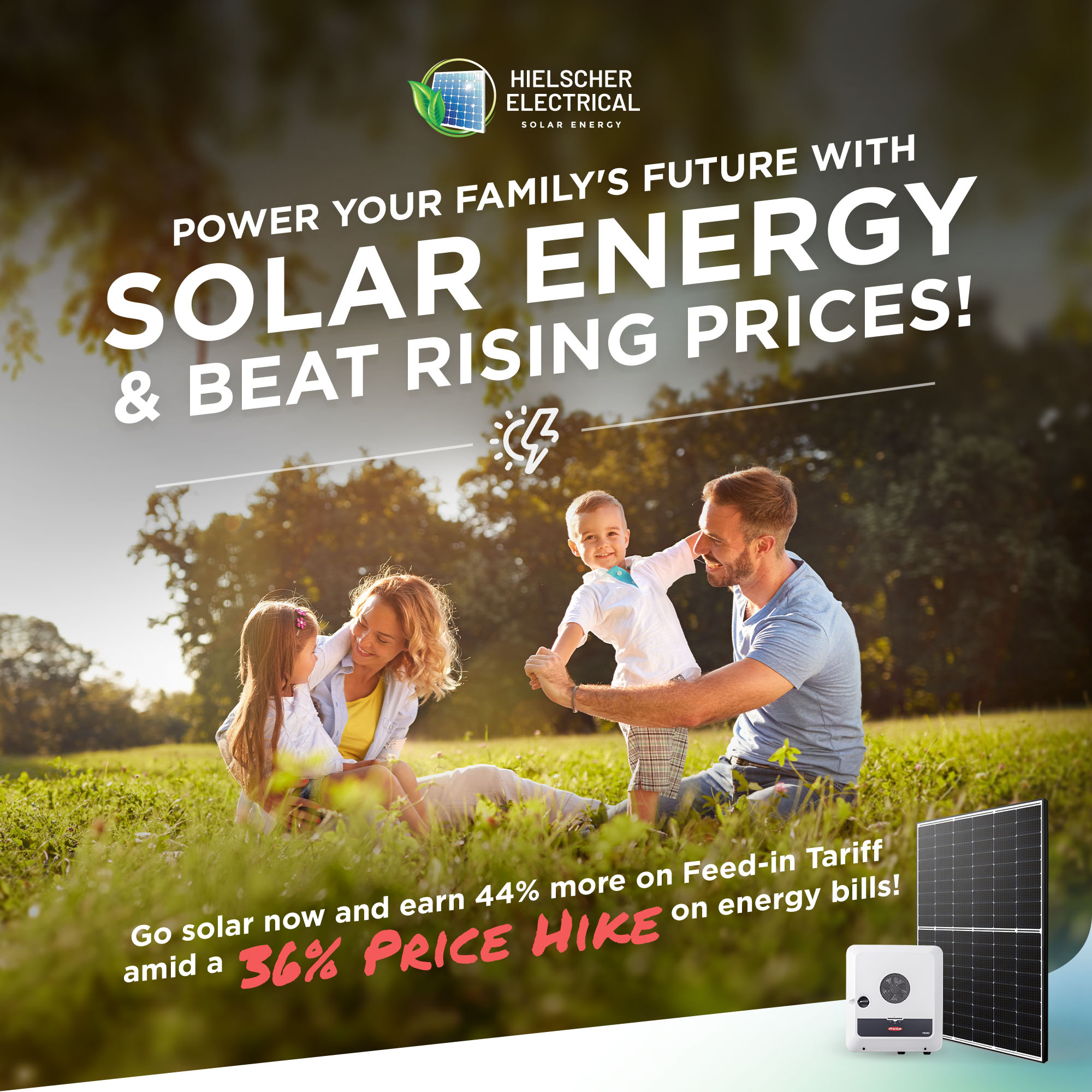If you are among the majority of Aussies feeling the pinch and despair that comes with soaring energy prices and the sense of slavery to energy providers, you must have given solar power a serious thought.
Unfortunately, the market is awash with so many kinds of solar systems and salespeople that move from door to door, and without the right information, you may become confused considering that the marketers will tell you only what they feel you should know.
At Hielscher Electrical, we are proudly solar energy specialists focused on helping households and businesses to make informed solar decisions when it comes to investing in clean energy.
I have prepared an easy-to-understand solar power buyers guide for 2022 that includes everything you need to know about solar and the options available so you can make a viable decision for your home or business.
How Solar Energy Makes the Difference
With the ever rising energy prices, the benefits that come with investing in solar power seem obvious. Essentially, harnessing the sun’s heat to power your home or business is more beneficial to the environment compared to the other forms of generating electricity like coal. But of course, the benefits are not just to the environment—the cost saving in the longer term is another reason why you should make the switch to solar.
Think of solar power as a financial investment. While you are required to pay some upfront cost, the returns on investment are immense. When you rely on solar to power your home during daytime, your electricity needs will be catered for by your solar system and not the utility company. Based on your location and the electricity rates applicable to your state, you could save up to 30 cents per kilo Watt hour (30c/kWh). Whenever your solar system generates excess energy, the surplus can be sold back to your energy company under the feed-in tariff (FIT) plan.
While you may not receive a zero dollar energy bill, you’ll have reduced it significantly and in a span of about 3 to seven years, the solar system will have paid for itself. The financial benefits of investing in solar power will be highlighted later in this guide.
The Basics Of On-Grid Solar power
One of the most common mistakes made by those planning to invest in solar power is assuming that they will finally cut ties with the energy company.
While solar may make you less dependent on their services, you’ll remain connected to their grid and use some electricity from the utility provider. Let’s demystify this further.
The term on-grid solar power simply means allowing your solar system to power your home at daytime when its hot. In the absence of the energy storage battery solution (discussed towards the end), a successful on-grid solar power installation only supplies your home with electricity while generating electricity using the sun’s rays.
This is more like riding a bike on a road that’s flat as your legs pedal to generate energy to keep you moving forward. The moment you cease generating the energy, the bicycle comes to a halt.
But unlike a bicycle without a backup system, your home will remain connected to the national grid. Hence, during the night or on cloudy days when solar panels aren’t generating power, your home will be powered by energy from your energy supplier.
Unfortunately, this is the used power that your electricity provider will charge you for. Again, this kind of solar plan involves a FIT tariff, meaning your utility provider will pay you for any surplus power generated and exported to the grid. This helps in off-setting the overall cost of electricity consumed when your panels aren’t generating power.
The Components of a Solar System
We are trying to make the post as simple as possible so you can understand what a solar system entails without the jargon.
First and foremost, according to Australian standards, the setup is called a solar PV system. The PV is short form of photovoltaic which is basically the process in which energy from the sun is captured by the solar panels and converted into the kind of energy needed in your home. Now let’s review the components involved in any complete solar power installation.
Solar Panels
There are two types of solar panels—the Polycrystalline and Monocrystalline. Thankfully, the two are suitable for the Australian conditions though the quality differs from one manufacturer to another.
Generally, solar panels are designed to be installed on your rooftop so as to effectively produce the energy to run your home. Given that your panels will remain outdoor and exposed to all kinds of weather, you may want to consider the more quality brands instead of ending up with cheap and poor quality panels.
Manufactures of solar panels are ranked according to ‘tiers’ which represent the reliability of the brand or company, and also measures the quality of the products. Hence if a manufacturer sells sub-standard solar equipment, they wouldn’t thrive.
Before investing in solar, take time to research about the best in the market. Keep in mind that brands with a top-dollar price tag don’t necessarily mean they are top quality; in fact, you can always get some great quality solar panels within a reasonable budget.
The Inverter
A solar inverter is an important device within your solar system that converts the DC power from the solar panels into AC energy (240V) required to power your home. Therefore, in the absence of an inverter, your panels alone cannot power your home.
Currently, there are three kinds of solar inverters:
Micro Inverter: this one comes pre-installed at the back of a solar panel.
String Inverter: This is usually mounted up on a wall and the solar panels on the rooftop are then wired to connect to it.
Power Optimisers: These are devices that feature both the micro and string inverters.
As you enquire from your solar installer about the best option for your energy needs, be keen with the positioning of your string inverter. Ensure they’re not directly exposed to sunlight. We expect your installer to be aware of this, and you should be comfortable with where they are fixed.
Mounting and Racking
This is basically the gadget that holds the solar panels firmly on the rooftop. The market is flooded with many brands and a good installer will recommend the best brand for your home. A local solar installation company with understanding of weather patterns in your region will ensure you get the right solar solutions for your energy needs.
How To Calculate Your Energy Usage
Energy is calculated in Kilo Watts Hour (kWh). The average Australian household uses about 16-20kWh each day. To determine your current energy usage level or behavior, check your electricity bills for the last couple of months. You will notice the amount charged varies from one month to another. Focus on the peak times and the low-usage periods during the year. this kind of information will help you understand the solar system size suitable for your home.
When Is Power Consumption highest?
Understanding your energy usage trend is essential to knowing whether solar power will be viable for you.
If your FIT (amount earned for exporting solar energy to the main grid) ranges from 7 cents – 20 cents per kWh, it’s better to consume the energy generated by your panels.
If your electricity company charges about 30 per kWh consumed but pays 7c-20c/kWh of surplus electricity exported to the main grid, it’s more viable for you to consume what is generated. This is referred to as ‘self-consumption’.
Staying at home and operating appliances during the day means your energy consumption will be higher than that of a home without energy usage from between 9 and 5pm, but only consuming energy in the evenings.
For instance, if your self-consumption rate is at 65% of energy generated by your panels, then your solar system will effectively pay for itself faster than for someone who consumes about 30% of electricity produced by their solar panels.
What Solar System Size Is Suitable For Your Needs?
The cost of installing solar has reduced in recent years, and homeowners can now install more solar panels than ever before. However, this does not mean covering the entire roof with panels, though you can install as many as you can. This will enable you to generate more power, and if it’s excess, your FIT will earn you more buck.
Notably, the Distributed Network Service Provider sometimes issues restrictions on the number of solar panels to be installed. As such, you should find out if there are any limitations.
Once you know the kWh consumption rate for your home, you will have a better understanding of the size of solar system required to make your installation viable. Again, if a household can afford the larger solar system upfront, go for it.
The total number of solar panels installed will be quantified in terms of kW, similar to the inverter.
Having been in this field for decades, we advise our customers to install more solar panels than indicated on the inverter. For instance, you can choose a 6.6kWh panel for an inverter rated 5kW. With this, you can expect a more rewarding rebate and more energy during winter, nights and early mornings when the sun is not shining.
Proper Panel Positioning For Maximum Energy
Of course, it’s expected that your solar installer perfectly understands this and should guide you well on this concept. Even then, it’s necessary that your solar system delivers maximum efficiency.
The positioning of panels on your rooftop is strongly influenced by your roof’s structure; however, their direction matters a lot more. At this juncture, it helps to understand your energy consumption needs.
East-facing solar panels: This is where the sun rises; hence the solar panels are expected to generate more power during morning hours.
West-facing solar panels: Since this is where the sun sets, the afternoons will see more solar energy generated.
North-facing solar panels: Generally, panels facing north usually generate more power, peaking about midday.
So, among the three directions, which one is the best? Well, you will be interested to know that your location is an important factor to take into consideration as well as whether there is shading or not.
In addition, every household has unique energy needs and consumption. If your home has no one at daytime, then north-facing solar panels aren’t really the best option. If possible, we recommend installing both east and west-facing solar panels if the roof structure permits. This will enable you to generate abundant solar power before leaving for work or school, and when back at home in the evening.
Every Australian state has its recommended angle that ensures maximum efficiency of your panels, though the roof of your angle is what dictates the efficiency.
What You Need To Know About The Feed-In Tariff
In simpler terms, the Feed-in Tariff (FIT) is the amount of money you will receive from your energy retailer whenever you export your excess energy back to the main grid. This only happens when your solar panels generate more energy than you need in your home.
The FIT rate varies and so it’s important that you take time to compare rates for different utility companies. Ideally, the rate currently ranges between 7c-20c per kilowatt hour. Hence, the rate depends on your state and preferred energy retailer. Getting the best FIT offer eventually helps to decrease the time it takes for your solar system to pay for itself.
For instance, let’s assume you are an owner of a 5kW solar system and your household’s self-consumption rate is 50%. It means the remaining 50% can be transferred to the main grid earning you a credit on your electricity bill. This results in savings of about $1,300 annually, or a Return on investment of 27%.
Ideally, the period it takes your solar system to pay for itself highly depends on various factors including how efficient you consume the energy generated by your panels. Also, the size of your solar panels also matter though most solar systems pay for themselves in a span of 3 years.
Solar Incentives and Rebates
The Government of Australia has a federal rebate scheme for homeowners that install solar systems. The rebate works by having it deducted from the selling price at the point of purchase. Even though the rebate is already being phased out (reducing by around 7% annually), it’s still available to Australians installing solar.
As at September 2019, the rate was estimated at $650/kW of solar power systems installed, though this varies from one region to another. This means a homeowner with a 3kW solar system receives a rebate of about $1,950.
To qualify for this rebate, homeowners must ensure that their:
- Solar system is less than 100kW
- Installation is done by a Clean Energy Council (CEC) accredited installer
- Solar panels and inverters are CEC approved.
Victorian homeowners are more advantaged for they have access to another rebate amounting to about $2,250 for just installing solar power. Be sure to check your state rebates to see if there are any other benefits.
What’s The Cost Of Installing a Quality Solar?
Generally, the cost varies between installation companies, and this is due to the quality of components used in the installation process. To guide you, below is the average price range of a quality solar system featuring tier 1 panels and a string inverter:
3kW: $3,500 – $5,000
5kW: $4,500 – $8,000
6kW: $5,000 – $9,000
10kW: $8,000 – $12,000
Note: The prices are exclusive of federal solar rebates.
Keep in mind that not every installation is similar. For instance, if your roof has a tricky structure or your home needs extensive electrical works to have solar energy installed, your installation costs will be higher.
Most reliable installers provide free quotes and consultations; hence you can always have the whole picture of your installation costs before signing that dotted line.
On-Grid Solar With Battery Technology Explained
Considering the high cost of acquiring on-grid solar with battery technology, many Australians have not been able to install it. As the name insinuates, on-grid solar with battery technology is where a homeowner is able to store excess energy generated in a storage battery and use it later when the sun isn’t shining.
Hence, instead of exporting the surplus energy to the main grid, a consumer stores it in the advanced battery technology. For instance, a household can use only 50% of the total energy generated by the panels and store the remaining 50% in a battery for use at night.
Note that there are times when a household will draw electricity from the main grid, and the amount drawn will depend on the amount of solar power generated by the panels during the day. Through this, many households can cut the ever sky rocketing electricity bills.
Even though the costs of solar + battery have dropped in the past few years, a 10kW on-grid solar + battery package is still costly ranging from $16,000 – $24,000, higher than the cost of a standard on-grid solar power solution.
Storage Batteries for Off-Grid Solar
Typically, the excess energy generated off-grid by solar panels is stored using battery technology. About a decade ago, this technology cost almost an arm and a leg since the battery technology was quite new.
Thanks to rapid advancement in technology and innovative companies like Tesla and Sonnen, the market has witnessed a significant reduction in the cost of batteries in recent times. While their cost is not friendly to every household’s budget, the energy industry has experienced a shift as more people choose to go completely off-grid.
Storage batteries employed in off-grid solar installations feature lithium-ion, though the new technology is more than just battery.
Battery solutions such as Tesla Powerwall 2, Sonnen Batterie and Australian made Redback Technologies Batteries feature various components that enable households to maximise their solar power generation and storage. For example, these storage solutions enable users to store certain emergency backup power generated by either solar or drawn from the main grid at the lowest rates.
Some of these latest technologies also feature software that monitors and controls energy consumption while at the same time functioning as an inverter. Thanks to these smart battery systems, Aussies are finding it easier to manage their electricity usage more efficiently and effectively.
Financing Your Solar System
Installing a solar energy system is an investment that actually makes your home attractive while appreciating its value. Thankfully, the investment is viable and eventually pays for itself quickly particularly when you are a smart energy user. But keep in mind that there is upfront cost that is involved.
If you’re ready to invest, solar is certainly a viable investment. For Australian households that see investing in solar as a far-fetched dream, there are other financing options to consider.
One can take a personal finance to clear the upfront cost of the system, but this would depend on your ability to take the finance and pay its interest charges.
There are solar installers who also provide own financing options, but you have to be careful and read between the lines to ensure you understand the fine print. 0% interest offers have a hidden catch, and in most cases involves a hike in the actual sale price.
If you’re lucky, you could find solar panel retailers that offer reasonable payment plans without inflated purchase costs.
Some of these payment plans deliver great value to customers, allowing energy savings on solar energy to pay for the solar system.
For instance, a 5kW solar system can cost about $300 quarterly in repayments over a five-year period. The difference between the surplus power sold back to the grid and savings generated from solar energy at daytime gives you enough money to save as well as pay for the panels.
Hielscher Electrical is a CEC Accredited solar and battery storage solutions expert that has undergone the rigorous process of the Clean Energy Council to ensure our solutions and practices adhere to the highest industry standards. We are fully insured and guarantee honest advice, reasonable prices and excellent workmanship. As a local and trusted solar installation company based in Cairns, we work with leading Australian made brands like Tindo Solar Panels and Redback Technologies and Batteries to deliver value to our clients.
Why Hielscher Electrical and Solar Cairns?
The local team of specialists at Hielscher Electrical boasts decades of hands-on experience providing the best solar energy supply and installation service to Queenslanders. Our solar packages are designed with the Tropical Conditions of the Far North Queensland in mind. We would love to help you reduce your electricity bill soon and give you control of your home’s energy needs using solar.
To get started, contact our solar experts 07 4033 0521 or fill in our contact form for a free quote and consultation about our solar energy options and a package that truly meets your energy consumption needs.



